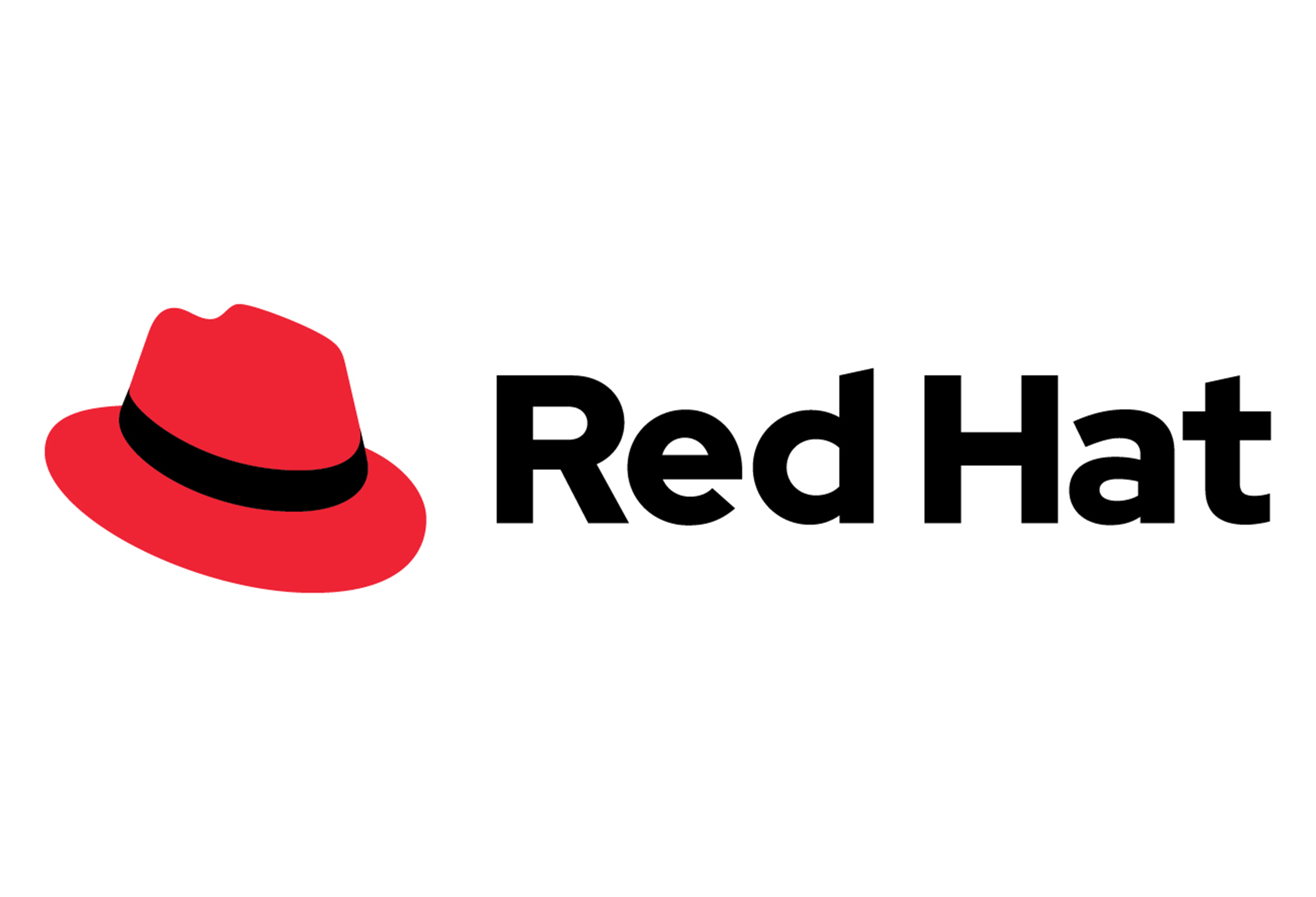
Article by Alessandro Perilli
Senior Director, Management Strategy, Red Hat
Without public cloud computing, we wouldn’t be able to face the pandemic in the way we are. On-premise data centers have never scaled this fast, and not even the most rigorous capacity planning in the world would have forecasted the resource consumption we face today. News outlets covering the outbreaks would have not been able to cope with an entire planet constantly refreshing the home page in the hope of reading good news (that’s what I do). Hospitals and research facilities publishing dashboards full of virus spread statistics would not have been able to acquire the massive datasets they have as fast as they did. Videoconferencing and streaming platforms wouldn’t be able to serve, exceptionally so far, the enormous amount of the human workforce suddenly forced to work from home.
And what is public cloud computing in the end? An astonishing, unprecedented, disciplined, methodical, pervasive amount of automation (and a few other, equally critical things).
Automation doesn’t just allow us to cope with the urgency and scale of the demand in the public cloud and inside our data centers. Automation is helping organizations around the world to transition to a work-from-home productivity model. Without automation, the security teams would be hard pressed to install VPN clients across millions of laptops, tablets and smartphones all around the world.
And it’s not just the automation of the digital world. Those items that we still receive through Amazon, Ocado, Walmart and more all around the globe while in self-isolation? Without semi-automated warehouses and distribution centers, no provider in the world would have been able to deliver packages at the speed we are receiving them after weeks of lockdown.
If you need to scale, if you need to cope with the urgency of COVID-19, automation can help. So, what can your organization do to automate now, more and faster?
- Focus on many small tasks rather than a big complex process.
The current situation requires a return on the investment faster than ever. And you cannot realize a return on the investment very quickly if you focus on one big process with many complex subprocesses that have never been standardized or automated before. It’s a waste of resources, and I have seen this approach fail many times in my career. Rather, automate as many small tasks as you can. Aggregated, they represent a significant overload for the company and a distraction from the bigger projects.
The more small tasks you automate, the more you will gain experience with and confidence in the automation solution you selected. At the same time, you’ll have a foundation of automated processes that can become the building blocks of more complex automation projects.
- Review what others have automated.
If you have limited experience, the knowledge of your industry peers will prove invaluable. Find online marketplaces for automation (Ansible Galaxy is an example, but there are others, depending on your automation platform of choice) and study what tasks people automate the most, and how. Evaluate how much is applicable to your IT environment and how much you’d have to change to adapt the automation workflow to it.
- Treat automation like software.
Some automation solutions (like Ansible) adopt a language that is much easier to write, understand, and troubleshoot than actual development code. The easier to understand, the more people can use it in their respective domains of expertise, the faster the return on investment.
Yet, no matter how easy to understand, an automation language is still prone to human error. A risk that you can mitigate by applying some of the best practices in software development. Start by thinking about things like automation workflow reviews or version control. The more mission-critical the environment being automated, the more robust the development process should be.
- Think out of the box.
IT automation is usually associated with the provisioning and configuration of servers in a data centre. While existing automation solutions excel in those tasks, some of them have expanded beyond the realms of IT Operations and are becoming invaluable tools for Network Operations, Security Analysts and Security Operations.
Automation can help configure hardware network devices as fast as they are deployed.
Automation can help deploy new security solutions where you need additional.
Automation can help speed up the triage of security attacks as more bad actors attempt to exploit the explosion of people and organizations going online.
In this time of unprecedented challenge, open source communities around the world are helping fight COVID-19 in many ways: projecting hospital workload, devising medical shields, 3D-printing ventilators, all the way to building high-throughput full testing labs that can analyse up to 10,000 tests per day.
Open source communities also make exceptional automation. Ansible, for example, is completely open source and is one of the top 10 most contributed projects in GitHub, among more than 100 million projects.
That enormous community is ready to help you get started.

บทความโดย อเลสซานโดร เพอร์ริลลี่
ผู้อำนวยการอาวุโสด้านกลยุทธ์การจัดการ เร้ดแฮท
หากปราศจากพับลิคคลาวด์เสียแล้ว เราคงจะไม่สามารถเผชิญกับการระบาดครั้งใหญ่ในวิถีที่กำลังเป็นอยู่ได้ ระบบศูนย์ข้อมูลในองค์กรไม่เคยปรับขยายอย่างรวดเร็วขนาดนี้มาก่อน แม้กระทั่งการวางแผนด้านกำลังการผลิตที่แม่นยำที่สุดในโลก ก็ยังไม่สามารถคาดการณ์ถึงการใช้ทรัพยากรมากอย่างที่เรากำลังเผชิญอยู่ในขณะนี้ ช่องทางข้อมูลข่าวสารที่เต็มไปด้วยข้อมูลการแพร่ระบาดของโรคจะไม่สามารถรับมือกับการที่คนทั้งโลกพากันรีเฟรชหน้าโฮมเพจตลอดเวลา ด้วยความหวังว่าจะมีข่าวดีให้อ่านกันบ้าง (ซึ่งผมก็ทำแบบนั้นเหมือนกัน) โรงพยาบาลและหน่วยงานวิจัยต่าง ๆ ที่จัดทำแดชบอร์ดด้านสถิติการแพร่กระจายของไวรัสจะไม่สามารถหาชุดข้อมูลขนาดใหญ่มาทำงานได้อย่างรวดเร็วขนาดนี้ระบบวิดีโอคอนเฟอเรนซ์ และการสตรีมมิ่งจะไม่สามารถรองรับพนักงานจำนวนมหาศาลที่สถานการณ์บังคับให้ต้องทำงานจากที่บ้านได้อย่างมีประสิทธิภาพจนถึงวันนี้
และท้ายที่สุดแล้วพับลิคคลาวด์คืออะไร คือ ระบบอัตโนมัติที่น่าอัศจรรย์ ไม่เคยปรากฏมาก่อน มีระเบียบ มีแบบแผน และใช้กันอย่างแพร่หลาย (และอีกสองสามอย่างที่สำคัญเท่าเทียมกัน)
ระบบอัตโนมัติไม่เพียงแต่ช่วยให้เรารับมือกับความเร่งด่วน และความต้องการที่เพิ่มขึ้นในพับลิคคลาวด์ และภายในศูนย์ข้อมูลขององค์กรได้เท่านั้น แต่ระบบอัตโนมัติยังช่วยให้องค์กรต่าง ๆ ทั่วโลกเปลี่ยนรูปแบบการทำงานไปสู่การทำงานจากที่บ้านได้อย่างประสิทธิภาพ หากปราศจากระบบอัตโนมัติแล้ว ทีมงานด้านความปลอดภัยก็จะได้รับความกดดันอย่างหนักจากการต้องติดตั้ง VPN clients ให้กับแล็ปท็อป แท็บเล็ต และสมาร์ทโฟนนับล้านทั่วโลก
ระบบอัตโนมัติไม่ได้สำคัญแค่โลกดิจิทัลเท่านั้น สินค้าข้าวของต่าง ๆ ที่เรายังได้รับจากผู้ค้าออนไลน์ ไม่ว่าจะเป็น Amazon, Ocado, Walmart และผู้ขายอีกหลายรายจากทุกมุมโลกในขณะที่เรากักตัวเองอยู่ภายในบ้าน หากปราศจากคลังสินค้าและศูนย์กระจายสินค้ากึ่งอัตโนมัติ ก็ไม่มีผู้ให้บริการรายใดในโลกจะสามารถส่งมอบสินค้าได้อย่างรวดเร็ว เหมือนกับที่เราได้รับกันอยู่หลังมาตรการล็อกดาวน์แล้วนานนับสัปดาห์
หากคุณต้องการปรับขยายการทำงานขององค์กร หากคุณจำเป็นต้องรับมือกับภาวะฉุกเฉินที่เกิดจาก COVID-19 ระบบอัตโนมัติสามารถช่วยคุณได้ ดังนั้น มาดูกันว่าองค์กรของคุณจะต้องทำอย่างไรบ้างเพื่อให้กระบวนการทำงานเป็นระบบอัตโนมัติมากขึ้นทันทีและเร็วขึ้น
- เน้นที่งานเล็ก ๆ ที่มีเป็นจำนวนมาก แทนที่จะเป็นงานใหญ่งานเดียวที่มีกระบวนการซับซ้อน
การทำธุรกิจในสถานการณ์ในปัจจุบัน ต้องการผลตอบแทนจากการลงทุนเร็วกว่าที่เคย และคุณจะไม่สามารถตระหนักถึงผลตอบแทนจากการลงทุนได้อย่างรวดเร็ว หากคุณยังเน้นไปที่กระบวนการขนาดใหญ่ ที่มีขั้นตอนยิบย่อยซับซ้อนมากมายที่ไม่เคยมีมาตรฐานกำหนดไว้ หรือไม่เป็นระบบอัตโนมัติมาก่อน ซึ่งการทำเช่นนั้นมันเป็นการสูญเสียทรัพยากรไปโดยเปล่าประโยชน์ ตลอดระยะเวลาในการทำงานของผม ผมก็ได้เห็นวิธีการแบบนี้ล้มเหลวมาหลายครั้ง คุณควรใช้ระบบอัตโนมัติในงานเล็กหลาย ๆ งานให้มากที่สุดเท่าที่จะทำได้ และเมื่อรวมกันแล้วคุณก็จะเห็นจุด โอเวอร์โหลดที่มีนัยสำคัญสำหรับบริษัท และสิ่งที่ทำให้ผิดพลาดไปจากโปรเจกต์ใหญ่ ๆ
ยิ่งคุณนำระบบอัตโนมัติไปใช้ในงานขนาดเล็กมากขึ้นเพียงใด คุณก็จะได้รับประสบการณ์ และความมั่นใจในโซลูชั่นระบบอัตโนมัติที่คุณเลือกมาใช้มากขึ้นเท่านั้น ในขณะเดียวกันคุณก็จะมีโครงสร้างของกระบวนการอัตโนมัติต่าง ๆ ที่สามารถกลายมาเป็นจิ๊กซอว์ต่าง ๆ ของโปรเจกต์ระบบอัตโนมัติที่ซับซ้อนมากขึ้น
- ตรวจสอบระบบอัตโนมัติที่ผู้อื่นใช้งานอยู่
หากคุณมีประสบการณ์ที่จำกัด คุณจะพบว่าองค์ความรู้ของเพื่อนร่วมวงการอุตสาหกรรมของคุณมีค่าล้นเหลือ ให้ลองค้นหาตลาดออนไลน์ของโซลูชั่นด้านระบบอัตโนมัติดู (เช่น Ansible Galaxy และโซลูชั่นอื่น ๆ ด้วยขึ้นอยู่กับแพลตฟอร์มระบบอัตโนมัติที่คุณจะเลือกใช้) และศึกษาดูว่ามีการใช้ระบบอัตโนมัติในงานประเภทไหนมากที่สุด และมีวิธีการใช้อย่างไร ให้ประเมินดูว่าระบบอัตโนมัติเหมาะสมกับสภาพแวดล้อมไอทีขององค์กรคุณมากน้อยเพียงใด และคุณต้องเปลี่ยนแปลงอะไรบ้างเพื่อปรับใช้เวิร์กโฟลว์อัตโนมัติ
- ระบบอัตโนมัติก็คือซอฟต์แวร์
โซลูชั่นระบบอัตโนมัติบางชนิด (เช่น Ansible) ใช้ภาษาที่ง่ายต่อการเขียน สามารถเข้าใจและแก้ไขปัญหาได้ดีกว่าโค้ดที่ใช้ในการพัฒนาจริง โซลูชั่นยิ่งง่ายขึ้นเพียงใด จะยิ่งมีคนนำไปใช้งานในโดเมนที่แต่ละคนชำนาญมากขึ้นเท่านั้น ซึ่งจะทำให้ได้รับผลตอบแทนจากการลงทุนเร็วขึ้น
แต่ไม่ว่าภาษาที่ใช้จะเข้าใจได้ง่ายเพียงใด ภาษาของโซลูชั่นระบบอัตโนมัติยังคงมีแนวโน้มที่จะเกิดความผิดพลาดจากการกระทำของมนุษย์ ความเสี่ยงที่คุณสามารถบรรเทาได้ก็ด้วยการใช้แนวทางปฏิบัติที่ดีที่สุดในการพัฒนาซอฟต์แวร์ โดยเริ่มจากการคิดเกี่ยวกับสิ่งต่าง ๆ เช่น การพิจารณาทบทวนเวิร์กโฟลว์อัตโนมัติ หรือเวอร์ชั่นคอนโทรลที่เป็นระบบจัดเก็บการเปลี่ยนแปลงที่เกิดขึ้นกับไฟล์ ยิ่งถ้าเป็นการปรับสภาพแวดล้อมของภารกิจสำคัญให้เป็นระบบอัตโนมัติมากขึ้นเพียงใด กระบวนการพัฒนาก็ควรจะต้องยิ่งสมบูรณ์มากขึ้นเท่านั้น
- คิดนอกกรอบ
ระบบไอทีอัตโนมัติโดยทั่วไปจะเกี่ยวข้องกับการเตรียม และการกำหนดค่าเซิร์ฟเวอร์ในศูนย์ข้อมูล
แม้โซลูชั่นระบบอัตโนมัติที่มีอยู่นั้นสามารถทำงานที่กล่าวถึงได้อย่างยอดเยี่ยมอยู่แล้ว แต่บางโซลูชั่นมีคุณสมบัติมากกว่าเป็นเพียงแค่การปฏิบัติงานด้านไอที และกำลังกลายเป็นเครื่องมืออันล้ำค่าสำหรับการปฏิบัติการด้านเน็ตเวิร์ก สำหรับนักวิเคราะห์ด้านความปลอดภัย และสำหรับการปฏิบัติการด้านความปลอดภัย
โซลูชั่นระบบอัตโนมัติสามารถช่วยกำหนดค่าอุปกรณ์เครือข่ายฮาร์ดแวร์ได้อย่างรวดเร็ว ในทันทีที่มีการปรับใช้
ระบบอัตโนมัติช่วยให้คุณเพิ่มการใช้งานโซลูชั่นด้านความปลอดภัยใหม่ ๆ ได้เท่าที่คุณจำเป็นต้องใช้
ระบบอัตโนมัติช่วยเร่งให้สามารถคัดกรองการโจมตีระบบความปลอดภัยได้เร็วขึ้น จากการที่ผู้ไม่ประสงค์ดีจำนวนมากที่พยายามใช้โอกาสจากการที่ผู้คนและองค์กรหันมาใช้งานบนระบบออนไลน์มากขึ้นอย่างกระทันหันในสถานการณ์เช่นนี้
ในช่วงเวลาแห่งความท้าทายที่ไม่เคยเกิดขึ้นมาก่อนนี้ ชุมชนโอเพ่นซอร์สทั่วโลกกำลังช่วยกันต่อสู้กับ COVID-19 ในหลาย ๆ ด้าน ไม่ว่าจะเป็นการจัดทำแผนงานเวิร์กโหลดของโรงพยาบาล การประดิษฐ์อุปกรณ์ป้องกันทางการแพทย์ การทำเครื่องช่วยหายใจด้วยเทคโนโลยีการพิมพ์ 3 มิติ ซึ่งทั้งหมดล้วนเป็นไปเพื่อการสร้างห้องปฏิบัติการที่รองรับการส่งผ่านข้อมูลปริมาณสูงเต็มรูปแบบที่สามารถทำการทดลองได้มากถึง 10,000 รายการต่อวัน
ชุมชนโอเพ่นซอร์สยังได้สร้างระบบอัตโนมัติที่มีประสิทธิภาพสูง เช่น Ansible ที่เป็นโอเพ่นซอร์สที่สมบูรณ์แบบ และเป็นโปรเจกต์ที่ติดอันดับหนึ่งใน 10 โปรเจกต์ที่มีคนเข้าร่วมมากที่สุดใน GitHub จากโปรเจกต์ทั้งหมดกว่า 100 ล้านโปรเจกต์
ชุมชนโอเพ่นซอร์สที่ใหญ่โตนี้พร้อมแล้วที่จะช่วยคุณเริ่มต้นใช้ระบบอัตโนมัติ

